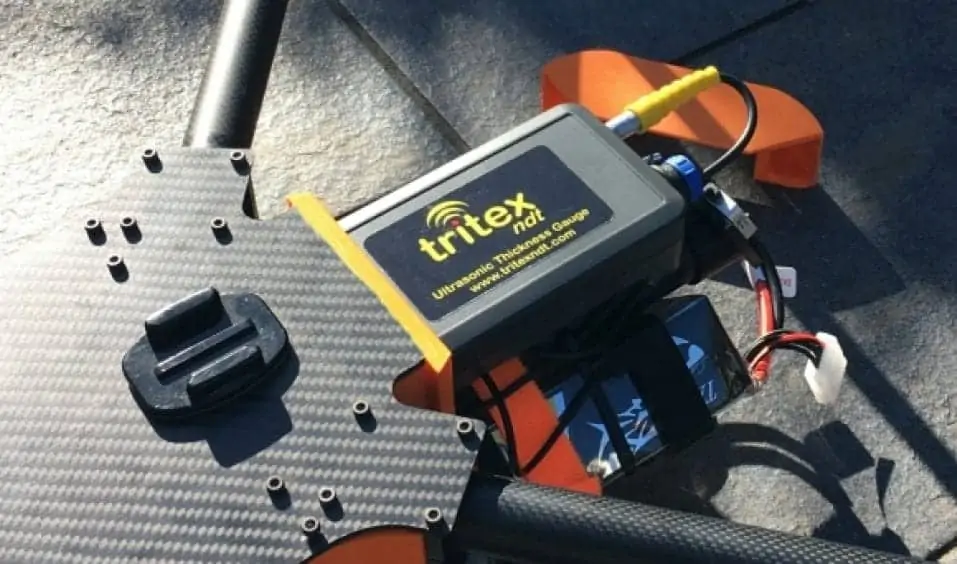Tritex NDT have announced the launch of a new ultrasonic metal thickness gauge specifically designed for mounting onto unmanned aerial vehicles (UAVs) for high level inspections. The gauge uses multiple echo to completely ignore coatings up to 20mm thick, and the single crystal probe ensures accurate readings on curved surfaces, such as storage tanks and pipelines. Remaining metal thickness and corrosion levels can be quickly and more easily checked without the need for scaffolding or rope access.
The Multigauge 6000 Drone Ultrasonic Thickness Gauge OEM transmits real time measurements wirelessly up to a distance of 500 metres using its integrated RF transmitter. The readings are displayed and stored on dedicated Communicator software within templates in a grid or string format.
The gauge weighs 45 grams and the plastic probe weighs 15 grams. “Keeping weight down to a minimum without losing performance has been essential,” says Jon Sharland, Sales Manager at Tritex NDT Ltd. “I believe we are leading the field in this new application. We have already had a number of successful installations over the past three years and now we are pleased to have the first commercially available dedicated drone thickness gauge, which has been developed in response to customer feedback and requirements.”
Dry couplant membranes reduce the weight further, as couplant and a means to deploy it are not required. The Multigauge 6000 Drone Ultrasonic Thickness Gauge is supplied as a complete kit for OEM installation onto drones. It accepts an input of 8Vdc – 35Vdc for complete versatility.
The probe has Intelligent Probe Recognition (IPR), which automatically adjusts settings in the gauge when connected, resulting in a perfectly matched probe and gauge for enhanced performance. The Automatic Measurement Verification System (AMVS) used with multiple echo ensures only true measurements are displayed, even on the most heavily corroded metals.



















